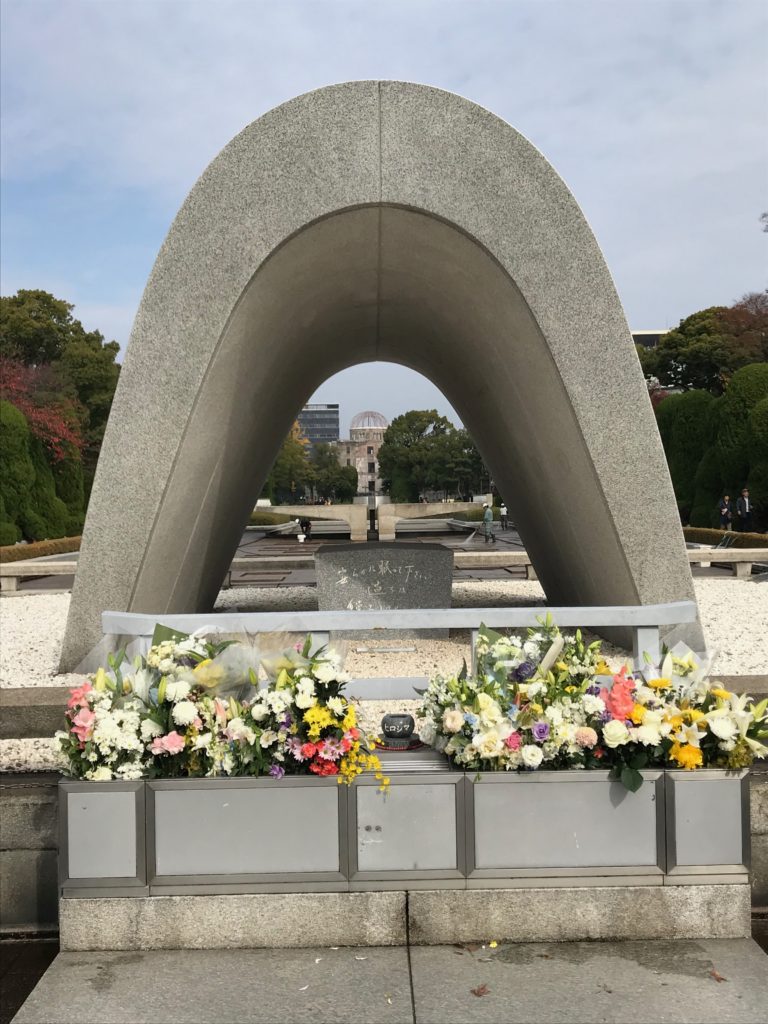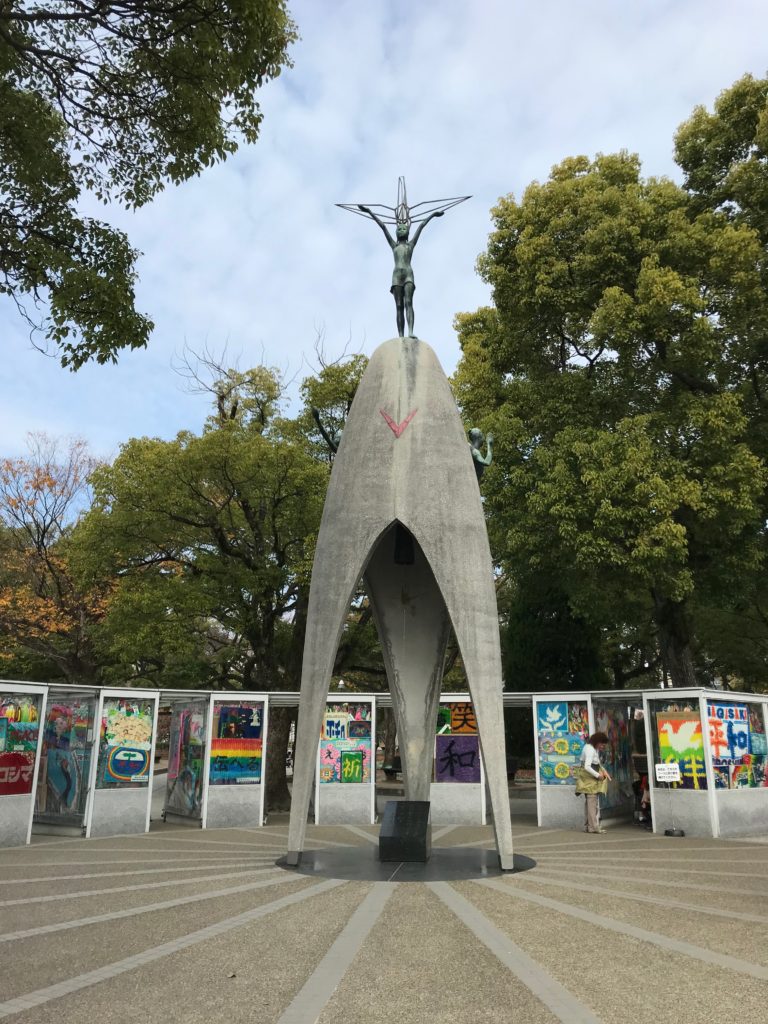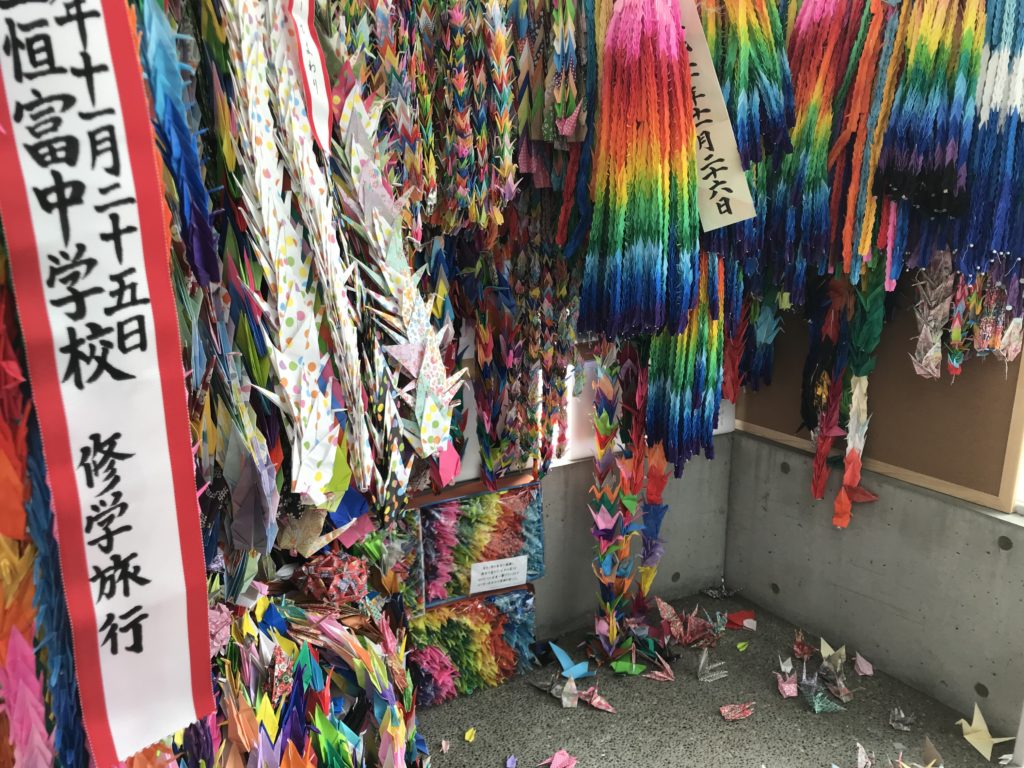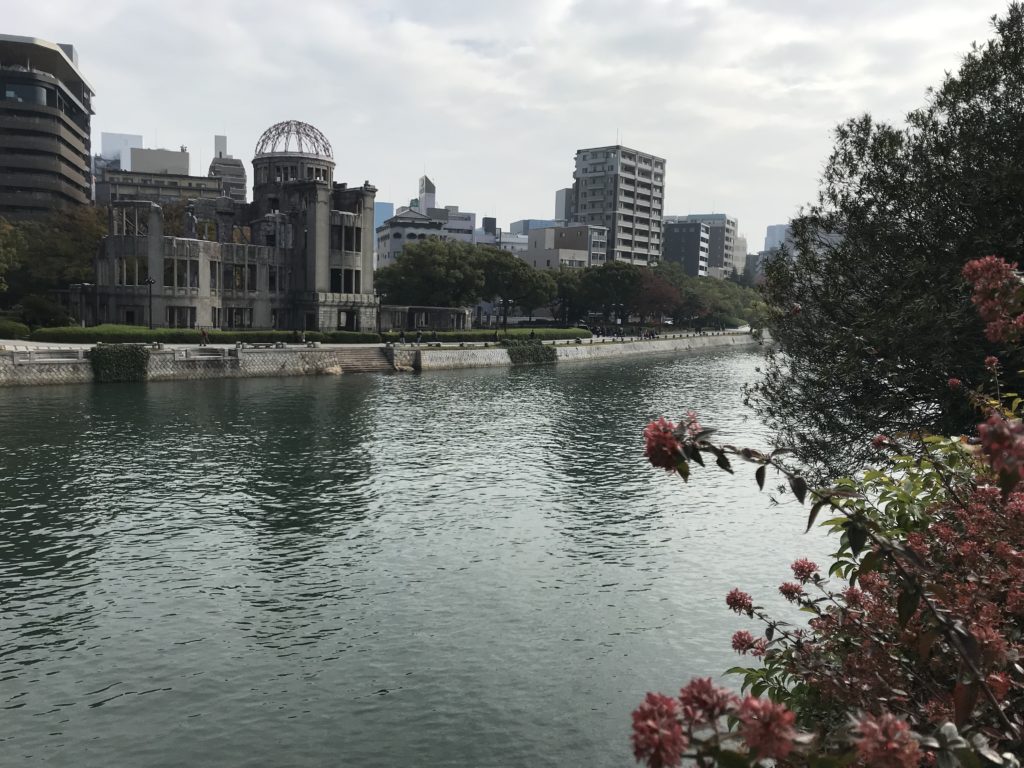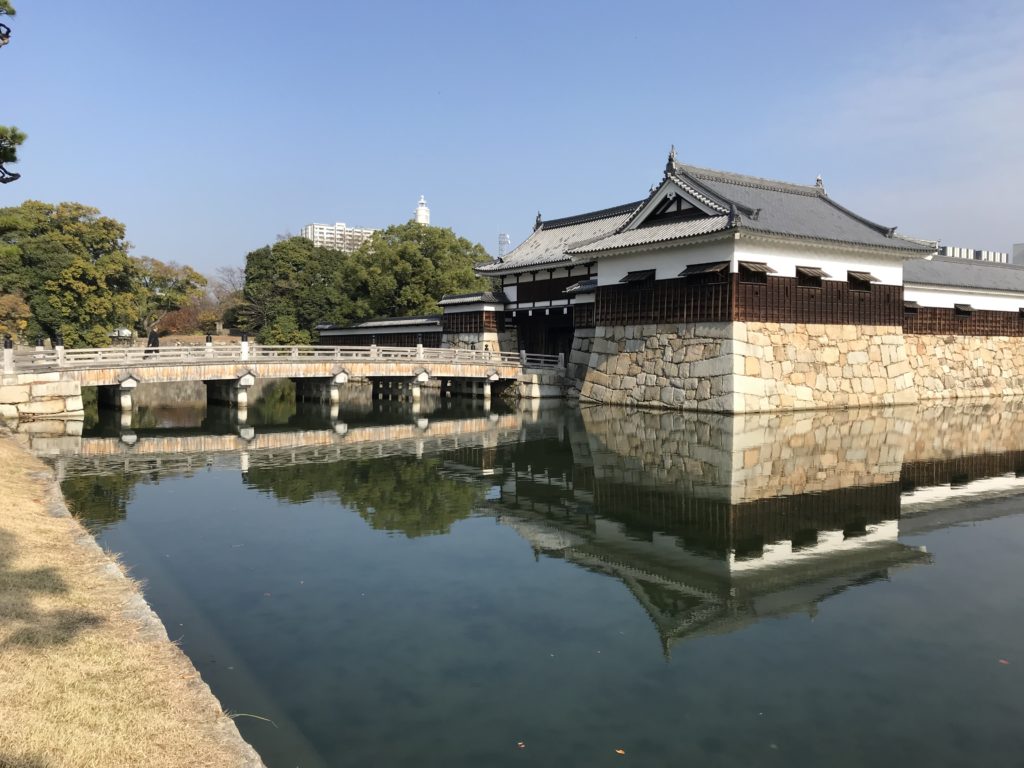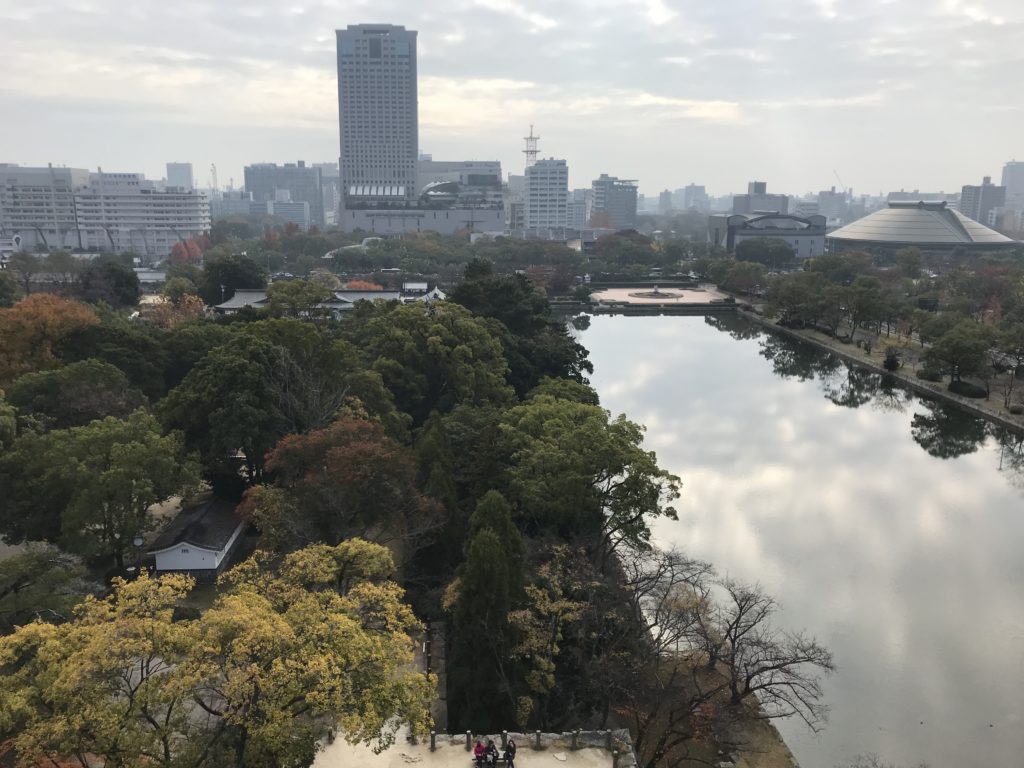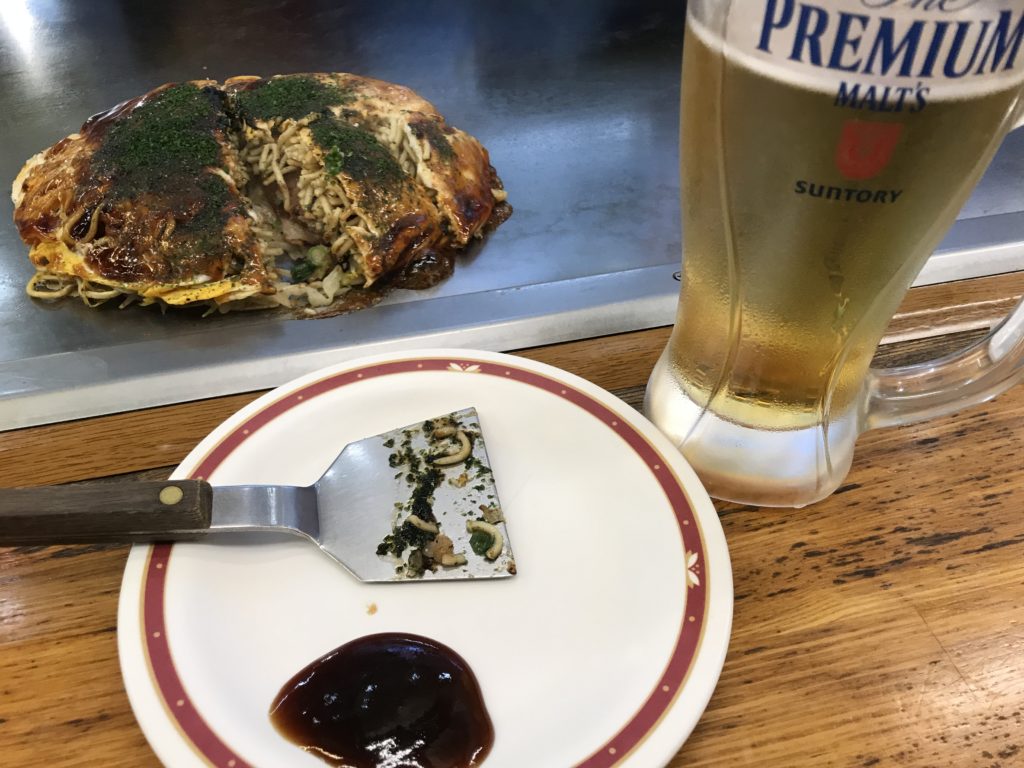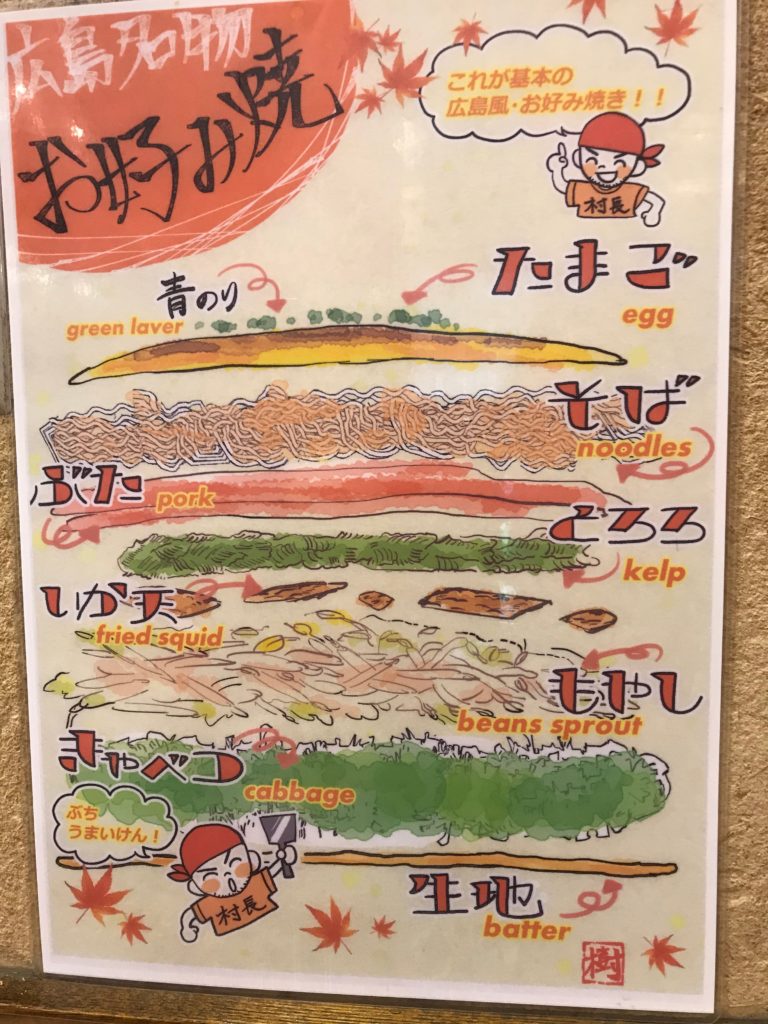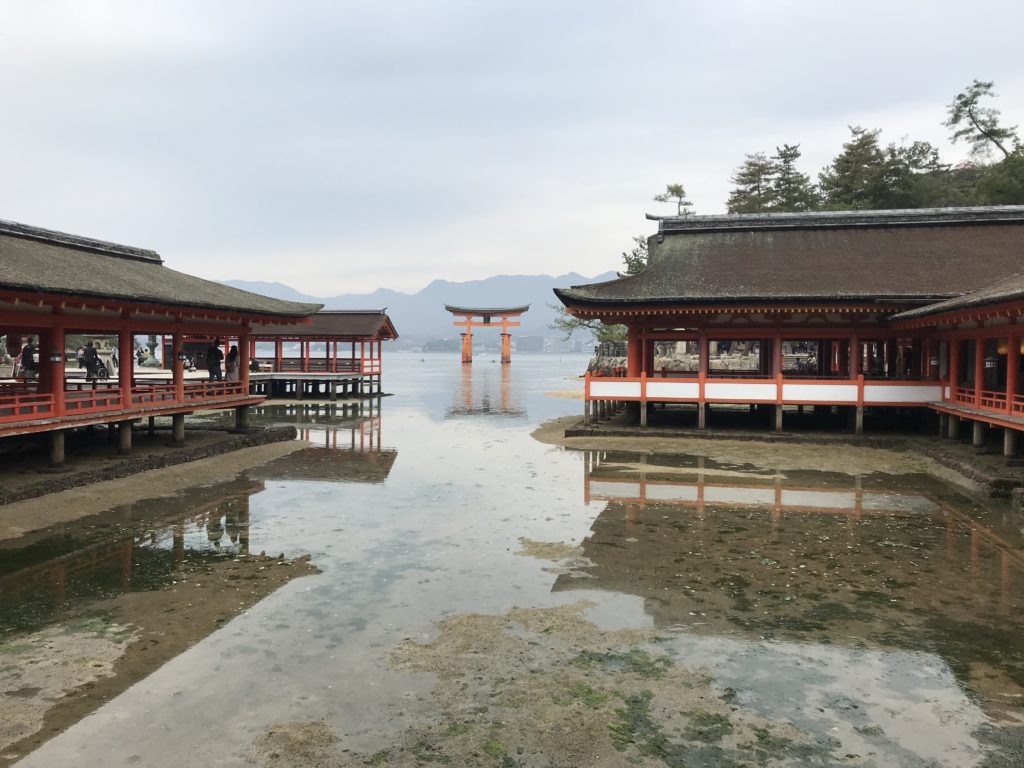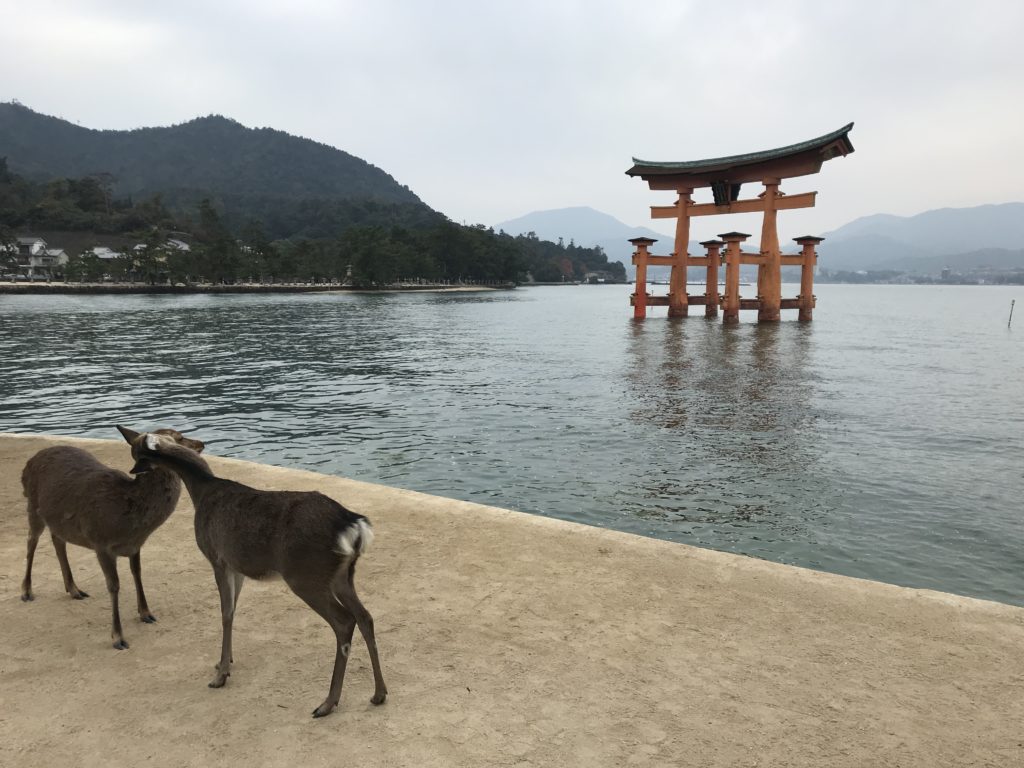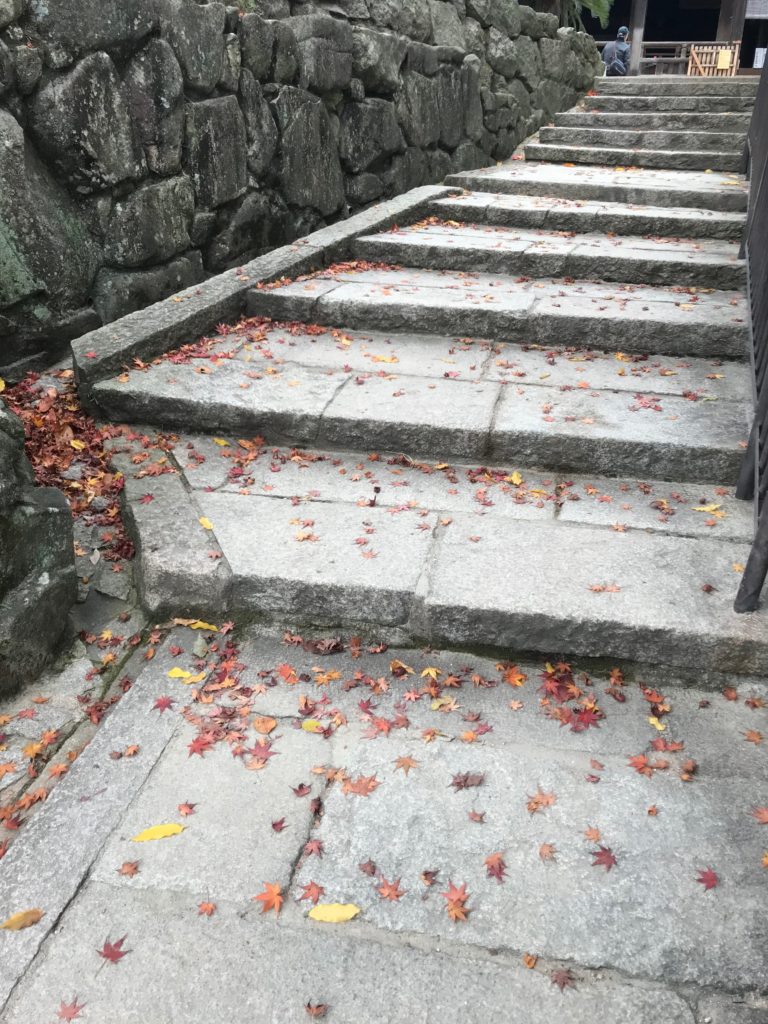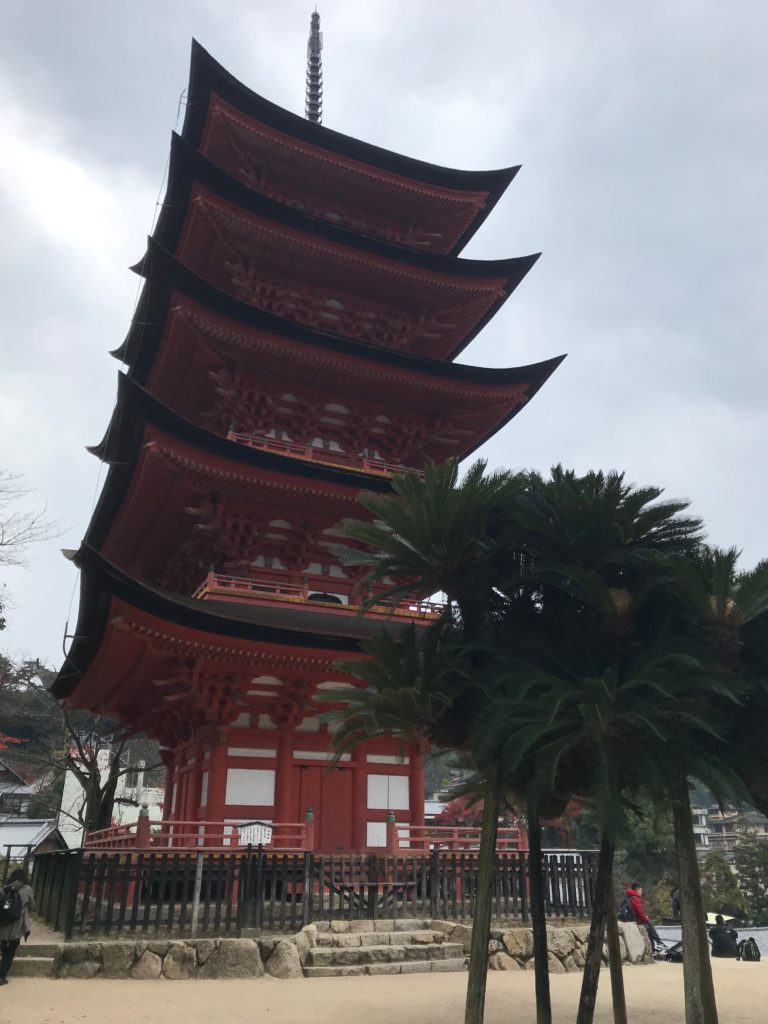The further south we traveled in Japan, the calmer it got, and in Hiroshima we even got seats on public transportation every time (gasp!). Hiroshima and Miyajima are also smaller in general—Hiroshima’s city center is easily walkable and Miyajima only has a couple thousand inhabitants.
After dropping our bags at our Airbnb, we headed straight for the Peace Memorial Park, where besides the park and monuments in general, I had been looking forward to seeing one in particular, the Children’s Peace Monument, dedicated to Sadako Sasaki, a girl who died of cancer caused by the atomic bomb at age 12. I listened to an interesting podcast (Stuff You Missed in History Class) about Sadako and her paper cranes. Over the course of her illness, she made hundreds of thousands of paper cranes, and when she died, her classmates continued in commemoration of her, with the numbers eventually tallying in the millions. Most of them are stored right there next to her statue, and it is quite an impressive sight. The park made for a nice walk, as there is a river that runs through it, and on the edge sits the only building left standing by the bomb.
Next we continued on to the Museum of Art, which was ironically showcasing an exhibit of the European masters, so we saw Picasso, Monet, Cezanne, and the like. A short stroll from the museum was the castle, empty on the inside but featuring a gorgeous view from the terrace on the top level.
For dinner, we went to the Okonomi-mura food theme park, which was a monstrous five-story building with tiny restaurants—most of them with only a bar to sit at—which all had Hiroshima’s specialty: okonomiyaki. It’s hard to describe, but basically has thin layers of batter with a whole bunch of deliciousness in between, including noodles, cabbage, egg, pork, and whatever else you wanted. They prepared it right in front of you, which normally wouldn’t be a problem, but for those of you who know me, you will probably have assumed from the picture that I left the place sweating buckets from sitting in front of the hot grill, and you would be right!
The next day, our penultimate one, we took a ferry to the island of Miyajima, a village really, that is famous for its “floating” shrine. The Itsukushima shrine has its torii out in the water of the bay, and when high tide comes in, the torii becomes half covered. When its low tide, you can walk right up and touch it. We were there at high tide, as can be seen from the pictures.
After walking through the shrine, we went to the local history and folk museum, which was actually converted from the old house of one of the richest families from times gone by, and then continued meandering down the small streets. We snacked on maple-leaf shaped pastries, which had their shape because of the dozens and dozens of maple trees lining the streets.
After visiting the Toyokuni shrine, mainly for its five-story pagoda (they make for the best pictures!) we took the ferry back to Hiroshima and had a relaxing evening eating more okonomiyaki (me) and lots of steak (my husband).
Although Hiroshima and Miyajima aren’t filled to the brim with touristy things to see and do, it was wonderful to have a couple of days at the end of our trip to relax and not feel pressured to run around all day long like we had in previous cities. I think Japan is the perfect starting point for a first trip to Asia; it has both the comforts of globalization (hello, Starbucks!) and enough traditional architecture to please whatever kind of tourist comes its way 😉

